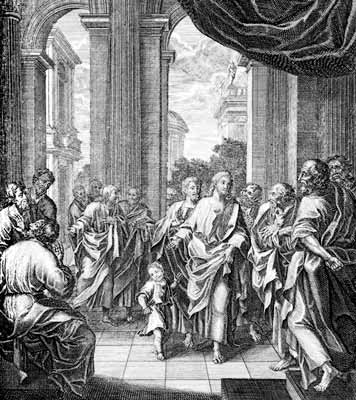November 19, 2002.
Solomon’s temple was magnificent. Even the floor was covered with gold, not to mention much of the furnishings (1 Kings 6:22-35). However, the glory of the gold was negligible compared to the glory of the Lord in a cloud that filled the temple. So great was that glory that the priests could not work (1 Kings 8:10,11).
Centuries later, following Babylon’s devastation of the temple, the Jews began to rebuild it. In the midst of their efforts, Haggai expressed the viewpoint of the elders in their midst when he said, “Who is left among you that saw this house in her first glory? And how do ye see it now? Is it not in your eyes as nothing in comparison to it?” (Haggai 2:3). They felt the rebuilt temple would be nothing compared to the glory of Solomon’s temple.
Haggai, however, contradicted those feelings by predicting, “The glory of this latter house shall be greater than of the former” (2:9). How would that be? “The desire of all nations shall come: and I will fill this house with glory, says the Lord” (2:7). “The desire of all nations” is a prediction of none other than our Lord Jesus, of whom John testified, “the Word was made flesh . . . and we beheld his glory” (John 1:14). Jesus’ glory was to fill the temple.
Like tourist guides, the disciples sought to bring Jesus’ attention to the buildings of the temple and “how it was adorned with goodly stones and gifts” (Luke 21:5). They missed it. The glory of God’s temple was not to be measured by the weight of the gold utilized nor by the beauty of its stones. The glory of Solomon’s temple was the glory of the Lord that filled it, even though only in the form of a cloud. The glory of the latter temple far surpassed that, for into it entered the glory of the eternal Word made flesh. The unsurpassed glory of the latter temple was Jesus himself, who graced it with his presence, his cleansing and his teaching.
